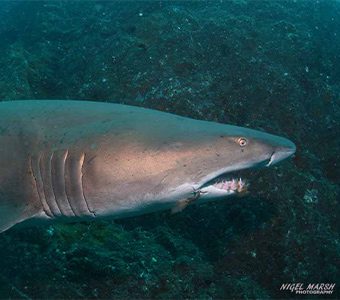The following my best 5 marine life encounters as depicted in my new book ‘CLOSE ENCOUNTERS WITH MARINE LIFE’. These encounters include watching the strange mating habits of Giant Cuttlefish and Greater Blue-ringed Octopus, observing a Variegated Lizardfish consuming a meal, waiting for a Warty Frogfish to get bored and some rather shocking encounters with a Coffin Ray.
FROGFISH – warts ‘n all
Frogfish are one of the most enigmatic creatures of the marine realm, but also one of the most bizarre. A member of the anglerfish family, frogfish use a head lure like a fishing rod to attract prey. They also don’t like to swim, so walk across the bottom on their hand-like fins. The frogfish family contains 50 species and encounters with these weird critters is always a joy.
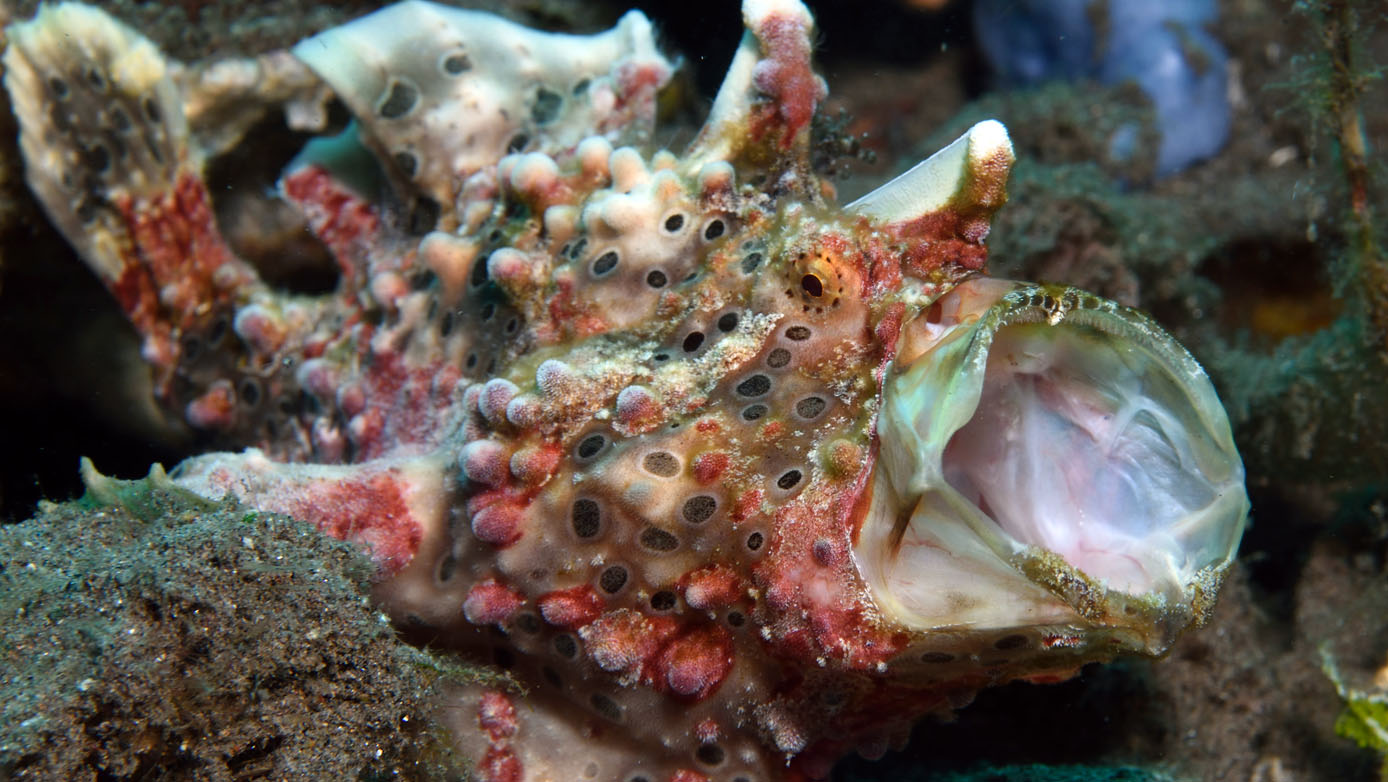
Frogfish, like all fish, yawn to stretch their jaw muscles. As ambush predators they often sit still for hours, waiting for prey to come within striking range, which is sure to lead to boredom and the inevitable yawn. Capturing frogfish in a yawn is often very difficult and time consuming. I once sat for over ten minutes to capture a yawn and when it finally happened the auto-focus on my camera decided to go to sleep. But sometimes you get lucky and get a yawn as soon as you settle down with the frogfish. Which is what happened when I encountered this colourful Warty Frogfish (Antennarius maculatus) off Dumaguete, Philippines.
CUTTLEFISH – cross dressing critters
The smartest invertebrate of all also happens to be the cutest, the wonderful cuttlefish. These remarkable members of the mollusc family are closely related to octopus and squid, and grouped together in the class cephalopod. Over 120 species of cuttlefish have been identified that vary in size from 5cm to 1m in length. Often referred to as the chameleon of the sea, cuttlefish can instantly change the colour and texture of their skin to blend into any background.
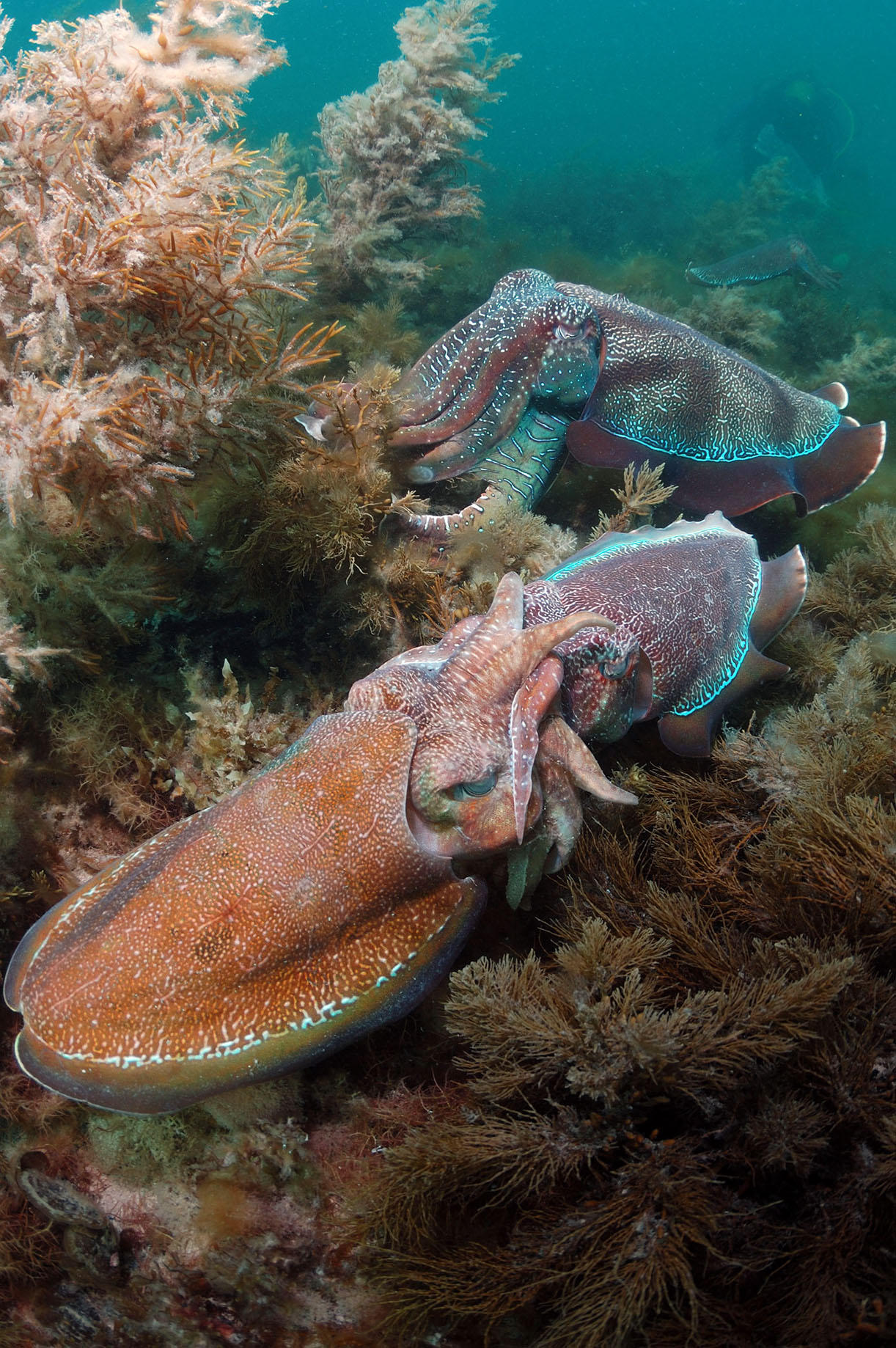
When mating, cuttlefish lock together in a tangle of arms, as can be seen in this encounter of mating Giant Cuttlefish at Whyalla, Australia. While embracing, the male inserts a modified arm into the body cavity of the female and deposits a package of sperm. The female then lays her eggs under a ledge and sadly dies. But the male cuttlefish depicted in this image didn’t win the right to mate by being the biggest or strongest, he got to mate by cross-dressing!
Cuttlefish are renowned for their intelligence, and small Giant Cuttlefish males are using their wits to outsmart the big males. These males have learnt to pretend to be females, by displaying female colours. This allows them to sneak under the guard of the large males and get close to the girls. While the big male is thinking that he suddenly has two girlfriends, the small male is busy reverting to male colours and mating with his girl. In this image the big male is the one looking on behind them. It took him over a minute to catch on, before he chased off the smaller male!
LIZARDFISH – quick-as-a-flash
Generally seen sitting on the bottom and doing nothing, lizardfish are not the most exciting family of fish divers encounter in the marine realm. This family contains around 35 species, and all have a mouthful of very sharp small teeth. It is very easy to get close to lizardfish, and sometimes they are worth watching.
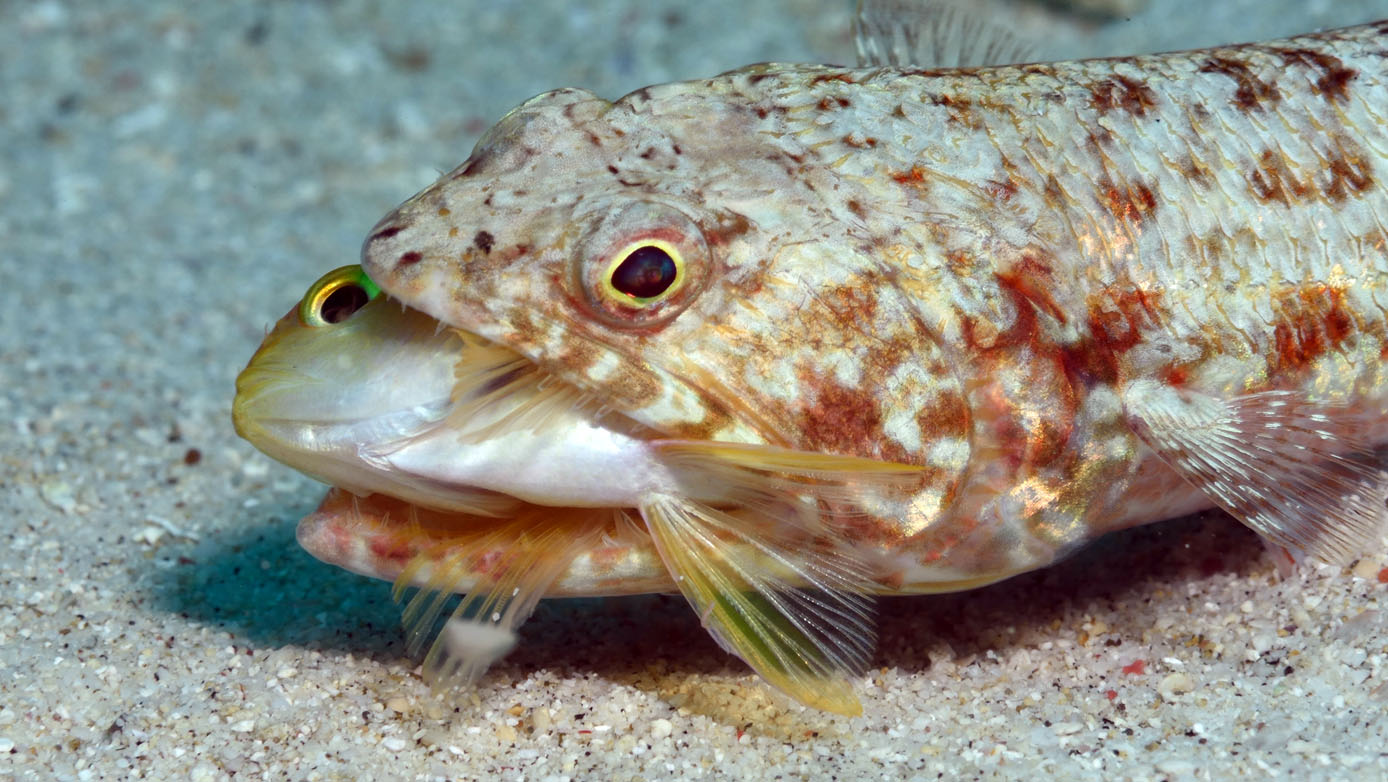
Lizardfish are nice to photograph. They sit motionless on the bottom and will generally allow a diver to get very close with a camera. However, these sweet, innocent looking fish have a dark side that is rarely seen. I always watch lizardfish in the hope of seeing this dark side, but it took over thirty years of diving before I finally witnessed it in Sogod Bay, Philippines. The dive had been pleasant, but uneventful, until I stopped to look at a Variegated Lizardfish (Synodus variegatus). It was simply sitting on the sand, but looked like it was ready for action. Suddenly the lizardfish launched off the bottom, and quick-as-a-flash shot straight over to a nearby coral patch and grabbed a Scalefin Basslet (Pseudanthias squamipinnis) with its needle-like teeth. It then just as quickly settled on the sand, with its meal hanging out of its mouth. This whole attack took around one second, not enough time to even raise my camera. But I quickly got my camera into action, managing a few quick images before the poor basslet disappeared down the lizardfish’s throat.
BLUE-RINGED OCTOPUS – head huggers
Few things are more deadly than the venomous bite of a blue-ringed octopus. These tiny octopus, most are no bigger than 10cm long, are beautiful to look at and fortunately very docile. The blue-ringed octopus family contains four known members and a few undescribed species, and are only found in the Indo-West Pacific region. Easy to observe and photograph, just don’t touch or annoy these deadly octopus.
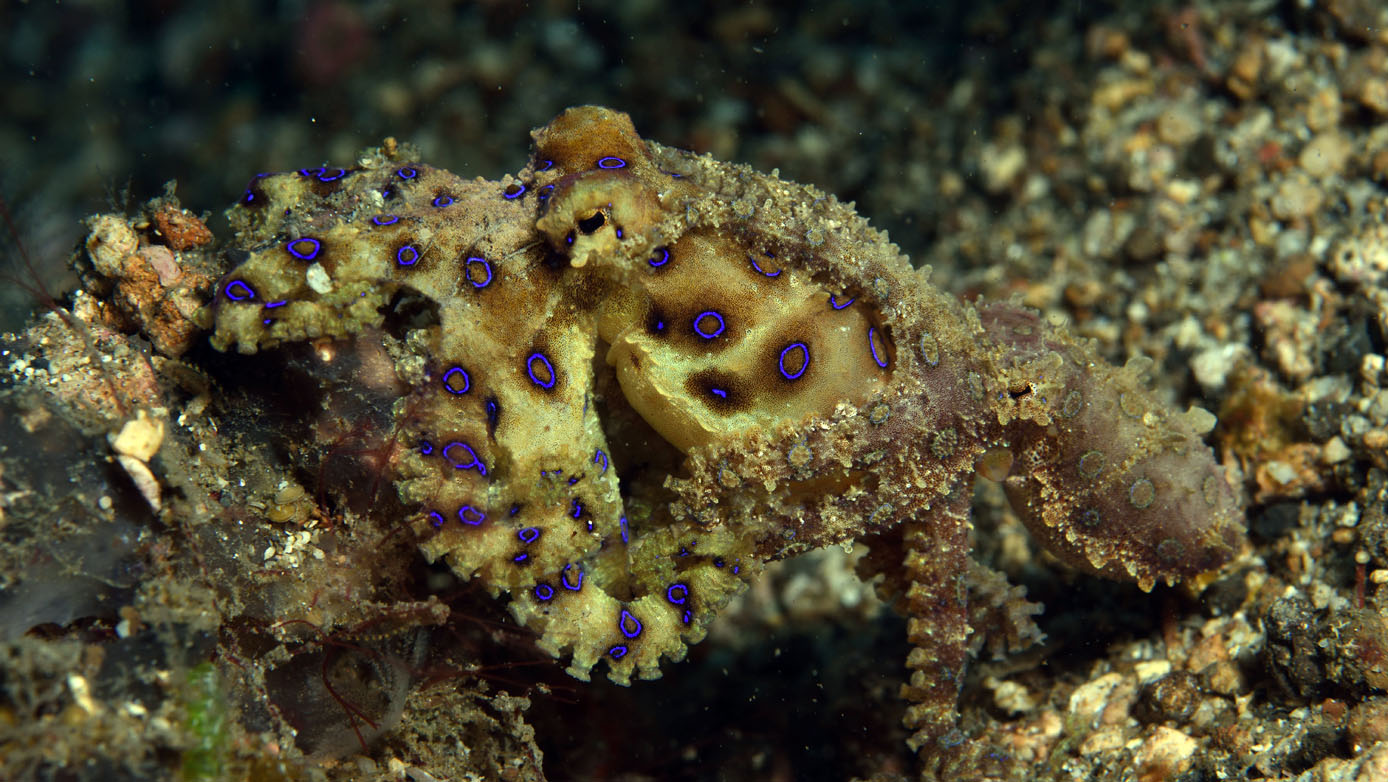
The most common tropical member of this family is the Greater Blue-ringed Octopus (Hapalochlaena lunulata). Like other members of this family they are most common observed at night feeding, but I had a rare day time encounter with a mating pair at Lembeh, Indonesia. My dive guide showed me this mating couple and at first I was confused, thinking I was witnessing a strange octopus fight. But after a couple of suggestive hand signals from my guide I worked out what was going on. Other mating octopus I have observed rarely come in contact, the male sending out a wondering arm to inseminate the female. But with blue-ringed octopus having short arms the male has to get much closer, hanging onto her head. In this encounter the only one in imminent danger was the male, as the females have been known to eat them after mating!
ELECTRIC RAYS – a numbing experience
One creature that divers never forget a close encounter with is an electric ray. Packing a punch of 200 volts, these small chubby rays have modified muscles that rub together to generate an electric charge. The rays use these electric shocks to stun prey, and also for defence, even against divers that accidently touch, sit or kneel on them. The electric ray family contains around 70 species, and while some species are locally common, most are difficult to find.
A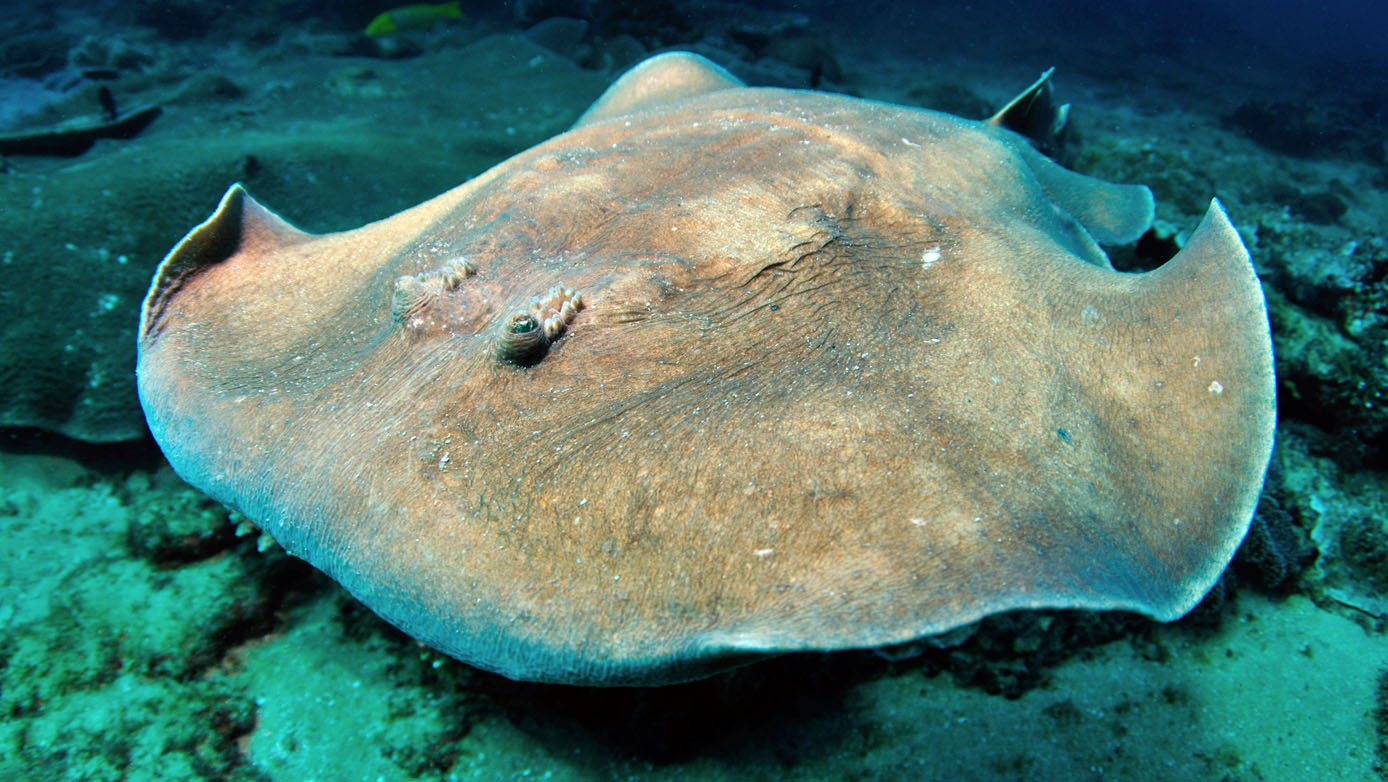
The most common electric ray that divers find in Australia is the Coffin Ray (Hypnos monopterygium). Also known as the Short-tailed Electric Ray and Numbray, the Coffin Ray is named because of its coffin-like shape, not because you could end up in a coffin after touching one. This wide spread species is easily overlooked as they bury under a layer of sand, and most divers have their first encounter by accident.
I had my first encounter with a coffin ray when snorkelling as a ten year old. Seeing a strange ray on the bottom I thought it was dead, so reached out to give it a poke with my finger. I quickly learnt that was a big mistake when I got a massive electric shock up my arm. You would think I would learn from that first encounter to avoid touching Coffin Rays, but have been zapped many times since. Fortunately I didn’t get an electric shock when I photographed this one off Brisbane.

